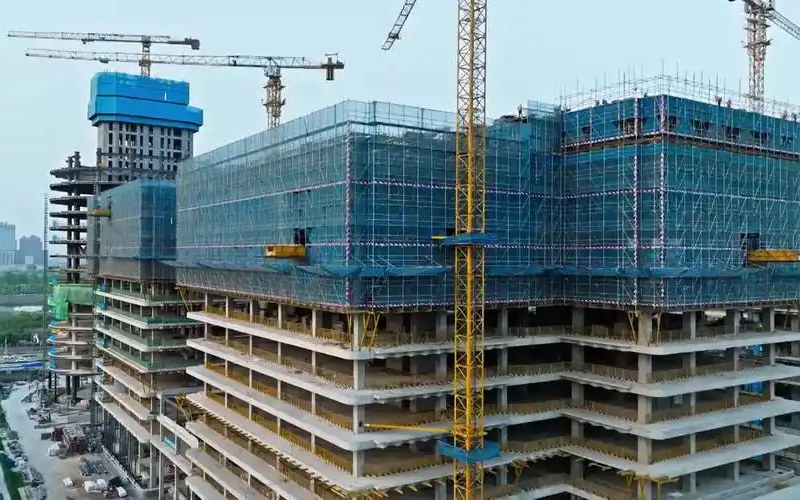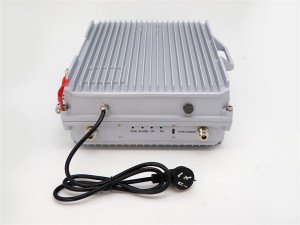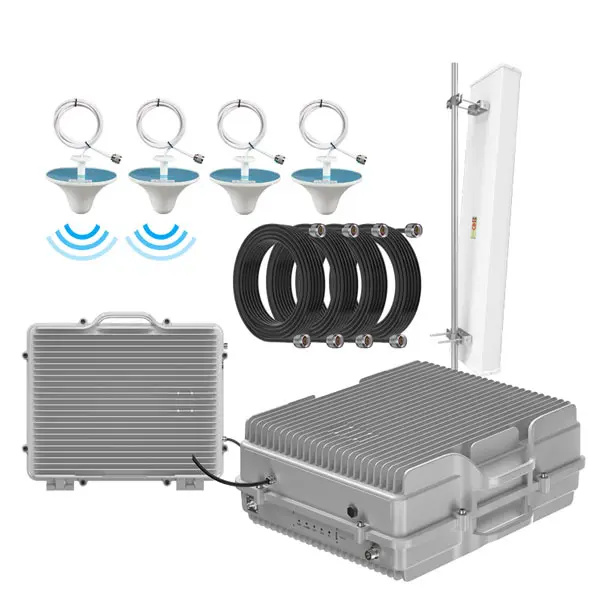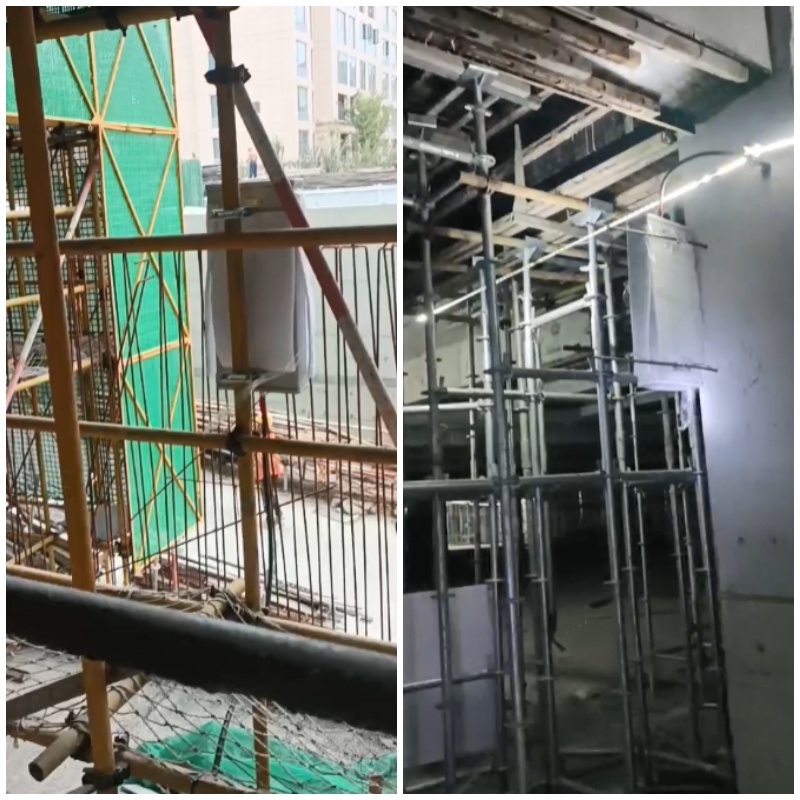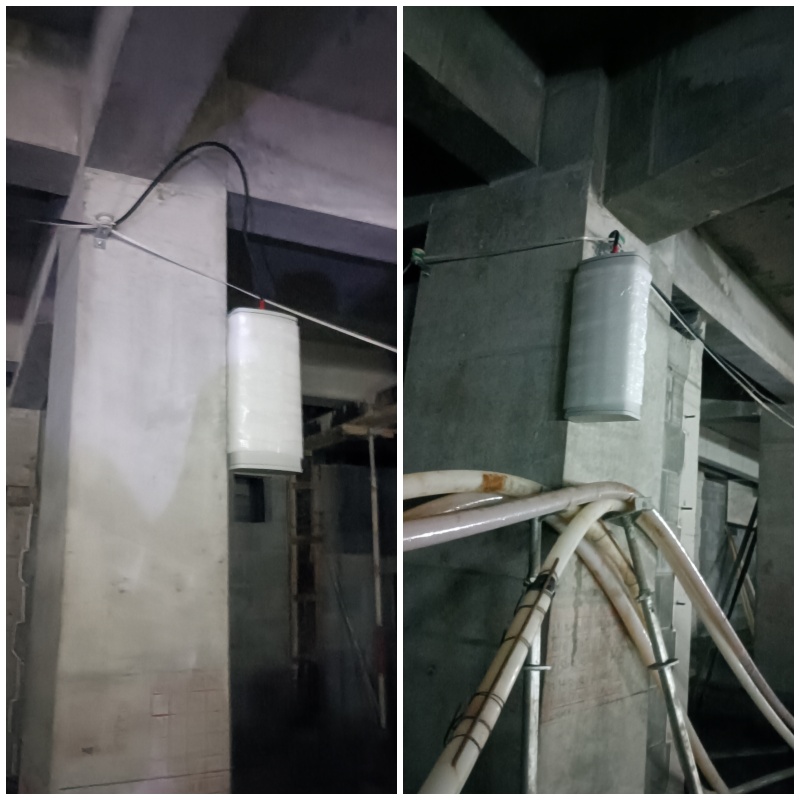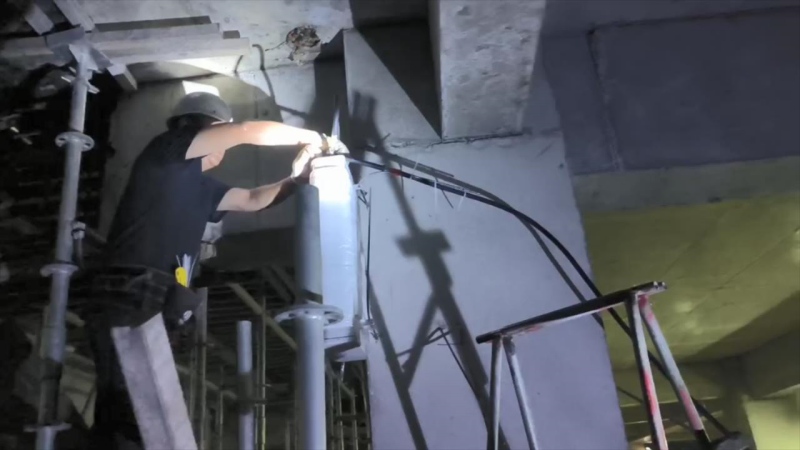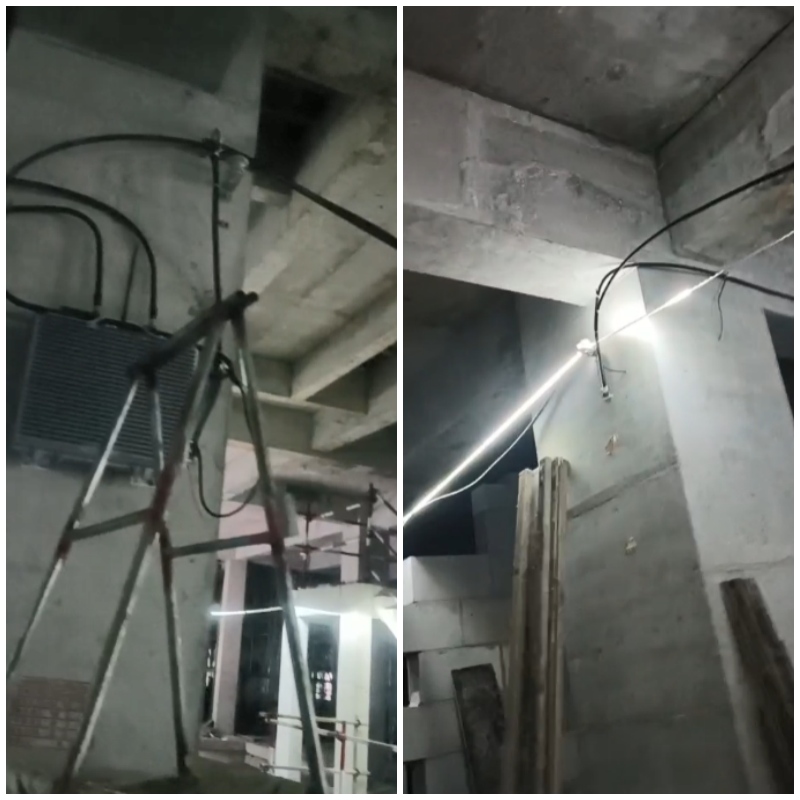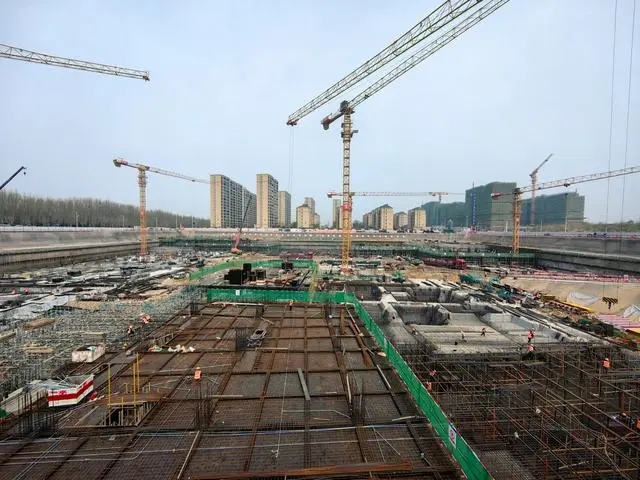I. Communication Challenges on Construction Sites: Why Temporary Coverage is Essential
In the construction of high-rise buildings, underground parking lots, or large complexes, communication disruptions are one of the most frustrating issues for contractors.
Here are some typical scenarios:
-Concrete and Steel Structures as “Signal Killers“: Once the building’s main structure is completed, the steel reinforcement forms a natural signal barrier, causing radios to fail and mobile phones to lose service.
-Dynamic Construction Environment: As floors rise or partition walls are built, existing signal paths get blocked, forcing workers to frequently move between floors to relay information.
-Dependence on IoT Devices: Smart construction machinery and safety monitoring instruments rely on 2G/3G/4G/5G networks, and any network outage can significantly delay construction progress.
Consequences: Industry statistics show that poor communication can lead to a 12% loss in project hours and a 35% increase in safety incidents.
II. Solution: The Golden Combination of Two Key Devices
To meet the communication needs during construction, we recommend a flexible combination of commercial mobile signal boosters and fiber optic repeaters, deployed according to specific requirements:
1. Commercial Mobile Signal Boosters — The Best Choice for Small and Medium-Sized Projects
Applicable Scenarios:
-Ground-level or low-floor construction (≤ 15 floors)
-Short-term projects (within one year)
-Small engineering teams with limited budgets
Lintratek Kw40 Mobile Signal Booster
Deployment Benefits:
-Quick Installation: Complete outdoor signal reception and indoor distribution in as little as 5 hours (KW35A + antenna + cables)
-Low Cost: One system costs approximately $2000 and can be reused for future projects.
-Self-Management: Use AGC and MGC to adjust signal gain.
2. Fiber Optic Repeaters — Essential for Large or Complex Sites
Applicable Scenarios:
-Super high-rise buildings (≥ 15 floors) or underground construction below the 3rd floor
-Large complexes with multi-trade coordination (e.g., office buildings, hotels, shopping malls)
-Projects requiring long-distance cellular signal transmission
Deployment Benefits:
-Long-Range Coverage: Use fiber optics to transmit signals over long distances within the building (e.g., Lintratek 5G Fiber Optic Repeater)
-Flexible Layout: Fiber optics have low signal attenuation, allowing for flexible internal layouts based on building design, and can be reused for future projects.
-Self-Management: Adjust signal gain via AGC and MGC, and monitor the Fiber Optic Repeater’s operation via Bluetooth.
III. Four-Step Deployment Process: From Planning to Demobilization
Step 1: On-Site Signal Diagnosis
Finding Signal Sources: Use a specific app to locate optimal signal sources.
Key Actions:
-Test the signal strength of nearby base stations at the highest point of the construction site (should be > -100 dBm)
-Mark areas with signal blind spots, such as basements, floors, and elevator shafts.
Step 2: Equipment Selection and Matching
Choose the appropriate mobile signal booster or fiber optic repeater based on the size of the project. It’s best to consult with us first, as our experience can help recommend the best product combination, saving you substantial costs.
Step 3: Quick Installation Tips
Outdoor Antennas (Signal Reception):
-Preferably use the top of the crane or the construction elevator shaft to mount directional antennas (saves on additional support costs).
-Install outdoor antennas on scaffolding or other structures to minimize the need for drilling.
-Use existing power cables for routing the feeder cable to reduce the amount of interior antenna installation work.
Indoor Distribution (Signal Transmission):
-Pre-drill holes where necessary in planned areas to install indoor antennas.
-Use scaffolding or other structures to mount indoor antennas, reducing the need for drilling.
-Route signal cables along existing power cables, minimizing indoor antenna deployment efforts.
Step 4: Demobilization and Equipment Maintenance
Standardized Dismantling Process:
-After power off, label cable numbers (for easier future deployment).
-Check for damage to indoor and outdoor antennas.
-Inspect the waterproof seals on the mobile signal booster or fiber optic repeater to ensure integrity.
IV. Three Major Benefits Contractors Need to Know of Using Mobile Signal Booster
-Project Timeline Guarantee: Smooth communication increases task coordination efficiency by 40%, reducing the overall construction period by 5-8%.
-Cost Control: Reusable equipment helps spread the cost across multiple projects, lowering the per-project cost to 20-30% of the initial investment.
-Safety and Compliance: Use Certified equipment to avoid fines for signal interference
V. Frequently Asked Questions
Q: Will temporary equipment interfere with the permanent communication system?
A: No. The temporary system operates independently of the building’s permanent DAS system.
Q: How can I ensure equipment safety during the rainy season?
A: Lintratek’s mobile signal boosters (or fiber optic repeaters) are waterproof. If used outdoors, they should be fitted with a rain cover, and the feeder cable connectors should be wrapped with three layers of waterproof tape.
Q: Can the same equipment be used for projects in different countries/regions?
A:Frequency Compatibility: For example, Europe commonly uses 900 MHz/1800 MHz, while North America focuses on 700 MHz/1900 MHz. Make sure to confirm the target country’s frequencies before selecting equipment.
Generally, if the mobile signal frequency in Location A is 1800 MHz, and Location B also uses 1800 MHz, any mobile signal booster supporting that frequency can be used in both locations.
You can always consult our customer service team to confirm the frequencies for your target region before purchasing.
Lintratek has long-standing collaborations with contractors both domestically and internationally. Feel free to explore the following case studies to better understand how temporary signal coverage projects are implemented.
fiber optic repeater for Commercial Building under construction
Conclusion
For modern construction projects, “temporary coverage” has become a necessary requirement rather than an optional one. By leveraging the flexible combination of mobile signal boosters and fiber optic repeaters, contractors can build a “removable communication network” at low cost, enhancing construction efficiency while adding an invisible layer of safety for their teams.
Post time: Feb-13-2025








